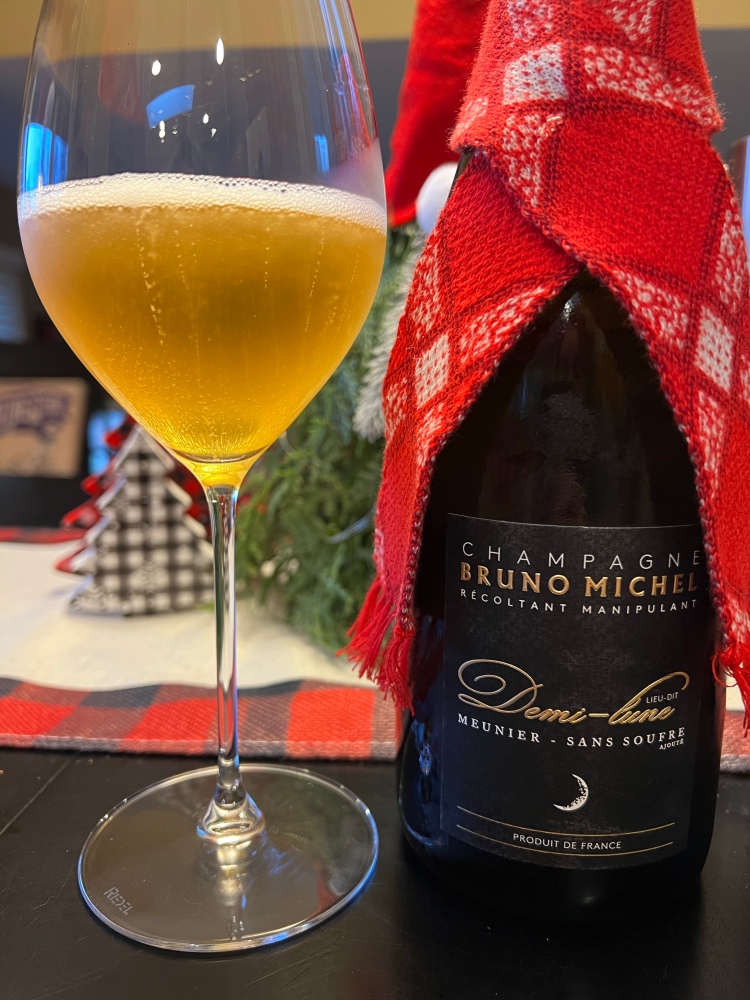
Pinot Meunier is a black grape used in the production of Champagne and other sparkling wines. It is added in small proportions to blends that are more predominantly Chardonnay and Pinot Noir to increase the fruity notes in the final product. Meunier got its name because of the layer of white ‘peach fuzz’ on the underside of the leaves, resembling a dusting of flour. A la meunière is a French cooking term for lightly coating a food in flour (most notably fish filets). While it is grown in small quantities throughout the world, Vallée de la Marne in the Champagne region of France is where a vast majority of it is cultivated. It is the second most planted red grape within the Champagne region and one of a total of eight grape varieties allowed by law to be used in the production of Champagne. There are a small number of producers in Champagne that make blends with a majority of Meunier, and even fewer still that use 100% in their final product.
This week, in preparation for New Year’s Eve, I drank a non-vintage Bruno Michel ‘Demi-Lune’ extra brut champagne made with 100% Pinot Meunier. Champagne and many sparkling wines are non-vintage because they are almost always blends of multiple vintages. This allows a champagne house to offset poorer vintages, which can be an issue in the colder climate, as well as create a consistent flagship style so ensure the consumer is getting a fairly standard product with each release. Extra brut refers to the level of sugar in the wine, with extra brut and brut nature being the driest sparkling wines and doux being the sweetest. This wine was a medium lemon-gold color with persistent, delicate bubbles. There were marked aromas of brioche and freshly risen dough while pouring my glass. In addition, almond, lemon peel, and apple cider became more evident as the wine had a bit more time to open up. The mousse gently tickled my palate as it foamed to fill my mouth. This wine had a refreshing acidity while maintaining a medium body. Tastes of clementine orange peel, white grapefruit juice, fresh orange blossom, white peaches and yellow pears, all highlighted with a chalky salinity, made this wine fascinating and complex. These notes slowly faded from the palate between sips. After trying the wine, I looked it up and was surprised, and intrigued, to find this wine is a single vintage but can’t be labeled as such because it was only aged on the lees for 2 years, not the 3 required by French wine law in order to print the vintage year on a bottle of Champagne. The 2 years of aging is likely due to the fact this wine only contains naturally occurring sulfites (none added during the winemaking process as a preservative) and because Pinot Meunier is not known for its ageability. Also, the vines that grew the grapes are about 55 years old, which likely increased the complexity of the wine. This would be a wonderful bottle to open for the New Year, but alas, since I couldn’t wait that long, I’ll just have to open something else! Wishing you all a Happy New Year!
-TheLooseTannin